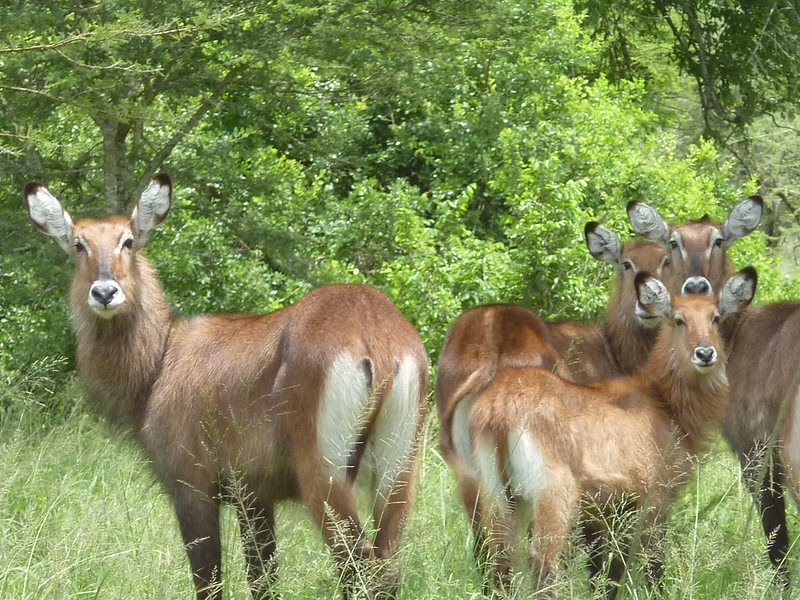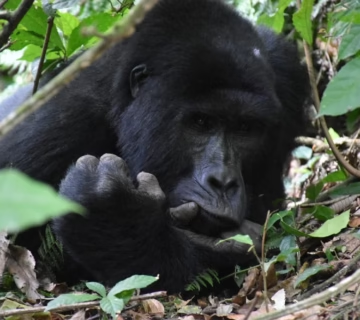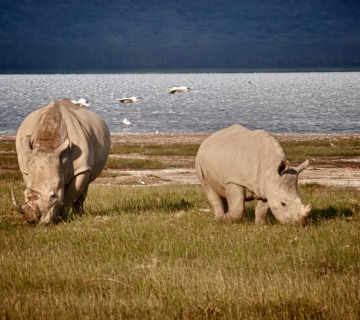What to see and observe in Akagera national park
Things to look at and see in Akagera National Park: Things to see in Akagera National Park! In Akagera National Park, you’ll feel like you’re in the middle of nowhere. The park is in the eastern province of Rwanda, right next to the border with Tanzania, and it has a lot of interesting wildlife and beautiful scenery. Acagera National Park is 1,089 square kilometers big and was made a national park in 1934. The park got its name from the Kagera River, which runs along its eastern border with Tanzania.
It is easy to see why Akagera National Park is so beautiful. It is surrounded by farmed hills, which are common in Rwanda. It has a low scenery with wide fields mostly covered in grass, the cactus-like Euphorbia candelabra plant, and both thick and thin woods. It also has the rough terrain that is typical of Rwanda.
The park is home to many different kinds of wildlife, such as the “big five”: elephants, buffaloes, lions, rhinoceroses, and leopards. There are also zebras, giraffes, warthogs, impalas, bushbucks, hyenas, and a number of antelope species, such as bushbucks, roan antelopes, Topes, klipspringers, Oribis, Cape eland, water-bucks, duikers, and impalas. The olive baboon, the vervet monkey, and the nighttime bush babies are some of the animals that live in this park. There are many crocodiles and hippos living in the shallow water of Lake Ihema. The best way to see them is to take a boat ride. This guide tells you what to see and look at on an animal tour in Akagera National Park, Rwanda.
The Five Most Valuable Gems
African elephants, which are known as “gentle giants,” roam the savannas and woods of Rwanda. Akagera national park is the only national park in Rwanda that is home to all five of these animals. The African Buffalo is a powerful and wise animal that lives in Rwanda’s national parks. Their huge size and intelligence make them a sign of strength and intelligence. Respect is due to their strong build and unexpected behavior.
The Eastern Black Rhinoceros, a species that is severely threatened, lives in Rwanda. In 2019, five of these beautiful rhinos were moved from Europe to Akagera National Park, where they are now living. Seeing them come back into the wild is an amazing event. African Leopards are hard to find, and they are very good at hunting by themselves. Their spotted fur blends in with the lush vegetation of Rwanda, making them hard to spot, just like lions that are seen walking freely in the Akagera steppe grasslands. It’s exciting to see these famous animals in their natural environment.
These beautiful animals have made Akagera National Park famous. If you go to Rwanda’s national parks, you can see these amazing animals in their native environment. Rwanda’s wildlife is fascinating for both nature lovers and people who work to protect wildlife, from the green woods to the open fields.
Predators and plant-eaters
A lot of different kinds of animals live in Akagera. There are beautiful impalas and big groups of topi. Keep an eye out for Masai giraffes and Burchell’s zebras. You can easily see these interesting animals if you go on an amazing games drive in the park. People who want to see all or some of these magnificent animals can go on the best game drives in Akagera National Park.
Primates
A lot of different kinds of monkeys live in the park, like vervet monkeys, Anubis baboons, olive baboons, blue monkeys, bush babies, and more. Meeting vervet monkeys and Anubis baboons as they swing through the trees in Akagera National Park is an experience that you will never forget. These fun monkeys add to the variety of animals in the park.
Seeing birds
Birdwatching in Akagera National Park is a real treat, with a wide range of animals living in savannahs and plains. Over 480 different bird types live in the national park, which shows how diverse it is. Akagera is a great place for bird lovers. You can see savannah and lowland birds in Akagera National Park, including birds that are only found in the Albertine rift. These include the beautiful Shoebill, the graceful Grey-crowned crane, the striking saddle-billed stork, the Northern Brown-throated Weaver, the Papyrus Gonolek, the White-Winged Swamp Warbler, the White-collared Oliveback, the Bare-faced Go-Away bird, and the African fish eagle. Gonolek with black heads, Drano with forked tails, and Grey-crowned Cranes Among others are the Shouldered robin-chat, the Grasshopper hawk, and the Dimorphic egret.
What to look at and see in Akagera National Park
Oliveback Lake Ihema with white collars
Lake Ihema is in the southern part of Akagera National Park. It gets its water from a river that flows into the Akagera River and provides water to several lakes in the park. It’s clear that Lake Ihema is the biggest lake in the park. The Nyabugogo branch, the Muhanga branch, and the Muhanga River are the three main streams of Lake Ihema. They all flow into the Kagera River. With a depth of up to 30 meters, the lake is about 50 kilometers long. The lake is home to over 155 different bird species, such as the critically threatened shoe bill stork, the papyrus gonolek, jacanas sandpipers, the Malachite Kingfisher, and herons. There are several grass areas around the lake where you can see different kinds of birds, hippos, buffalo, and other animals. The papyruses are also safe havens for many types of birds in the park, which makes it a great place to go birdwatching. Take a boat ride on the beautiful Lake Ihema to see more than just the scenery. The water is home to many different kinds of animals.
The best time to go to Akagera
You can visit Akagera National Park at any time of the year, but the best time to see wildlife is during the dry season, which runs from June to September. During this time, the vegetation is thin, making it easier to see the animals, and many of the water sources have dried up, so most of the animals gather around the few sources of water that are still there.


